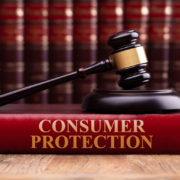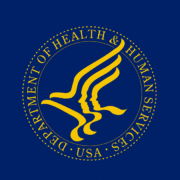Science should drive obesity care
 By Nancy Glick, Director of Food and Nutrition Policy
By Nancy Glick, Director of Food and Nutrition Policy
Today, over 100 million Americans, or 40.3 percent of adults, are living with obesity. This makes obesity the nation’s most widespread chronic condition, impacting many more people than diabetes, heart disease, stroke, certain cancers, chronic lung disease, and chronic kidney disease.
Yet, the sad fact is obesity still gets short shrift from health professionals and policymakers, even though it worsens the outcomes of more than 230 chronic diseases, is responsible for an estimated 400,000 premature deaths annually, and costs society an estimated $1.72 trillion a year. As a consequence, only 10 percent of people with obesity get help from medical professionals, meaning the disease remains largely undiagnosed and undertreated. This is occurring even though leading medical societies, including the American Medical Association (AMA), agree that obesity is a serious disease requiring comprehensive care.
It doesn’t have to be this way, which is why the National Consumers League worked with the National Council on Aging and leading obesity experts to issue the first Obesity Bill of Rights for the nation, which establishes eight essential rights so people with obesity will be screened, diagnosed, counseled, and treated according to medical guidelines. The goal is to put an end to the prejudice, incorrect beliefs about obesity, misinformation about treatment options, and outdated government policies that keep Americans from getting the same standard of care as those with other chronic diseases.
It will take time for the Obesity Bill of Rights to be incorporated into clinical practice, but specific rights already have significance. This is the case with new “blockbuster” injectable medicines called GLP-1 (glucagon-like peptide-1 receptor) agonists that work by mimicking a hormone produced in the small intestine to reduce appetite and slow digestion. Considered a game-changer in chronic obesity treatment, GLP-1s can help people lose up to 20 percent of their weight in 26 months. Thus, The Right to Coverage for Treatment reinforces calls from obesity specialists and medical societies for an end to exclusionary coverage policies by insurers and government agencies, so GLP-1 medications are a treatment option for adults at higher risk for living with weight-related diseases.
The major challenge has been the Medicare program, which excludes coverage for weight loss drugs due to past safety concerns that no longer exist today. But this could change. On November 26, 2024 the Centers for Medicare and Medicaid Services (CMS) published a proposed rule to allow seniors on Medicare and adults with Medicaid to have coverage for GLP-1s, thereby removing one of the biggest obstacles impeding access to quality obesity care in the country. If CMS’s proposal is finalized, the right to coverage for obesity treatment will become a reality for 7.4 million Americans – a good start in ensuring that people with obesity receive individualized quality care.
However, there is a lot of misinformation about GLP-1 medications, so The Right to Accurate, Clear, Trusted, and Accessible Information is also important, especially because disinformation is raising concerns among health professionals and the public. To date, the Food and Drug Administration (FDA) has approved four GLP-1 drugs based on evidence from large-scale clinical trials that these medicines are safe and achieve substantial weight loss. Yet, critics of these drugs assert these compounds cause severe side effects in all users, claim GLP-1 medications cause depression and suicidal thoughts, and allege the European Union (EU) is investigating this matter.
Responding to these allegations, experts in obesity treatment have assembled the facts from scientific journal articles and government reports. In furtherance of the right of the public to have this information, here is a summary of these findings:
- Regarding the potential side effects of GLP-1s, several studies dispute the assertion that GLP-1 drugs cause severe adverse effects in all people. The consensus is that because these drugs slow stomach emptying, they can cause gastrointestinal problems that are usually mild to moderate and often go away within one to two months.
- As to GLP-1s causing suicidal ideation, a recent commentary in JAMA Open Network concludes that large-scale studies do not show any increased risk of suicidal ideation while a 2024 study by researchers at Case Western Reserve University School of Medicine found that people taking a GLP-1 drug had a lower risk of suicidal thoughts compared to those taking a non-GLP-1 compound. Similarly, the FDA published a detailed report in January 2024 also finding no association. FDA reached this conclusion after analyzing information on adverse events from the FDA Adverse Event Reporting System (FAERS), reviewing a meta-analysis of GLP-1 clinical trials data, and analyzing post-marketing data in the FDA’s Sentinel System.
- Concerning the investigation by the EU’s European Medicines Agency, EMA’s Pharmacovigilance Risk Assessment Committee conducted a review of health records and issued a finding that no causal association exists between GLP-1s and suicidal thoughts or self-injurious actions.
The Rand Corporation coined the term “truth decay” to call attention to the blurring of the line between opinion and fact. It is important that “truth decay” not become a new obstacle to Americans receiving quality obesity care.








 By Sam Sears, Health Policy Associate, National Consumers League
By Sam Sears, Health Policy Associate, National Consumers League















